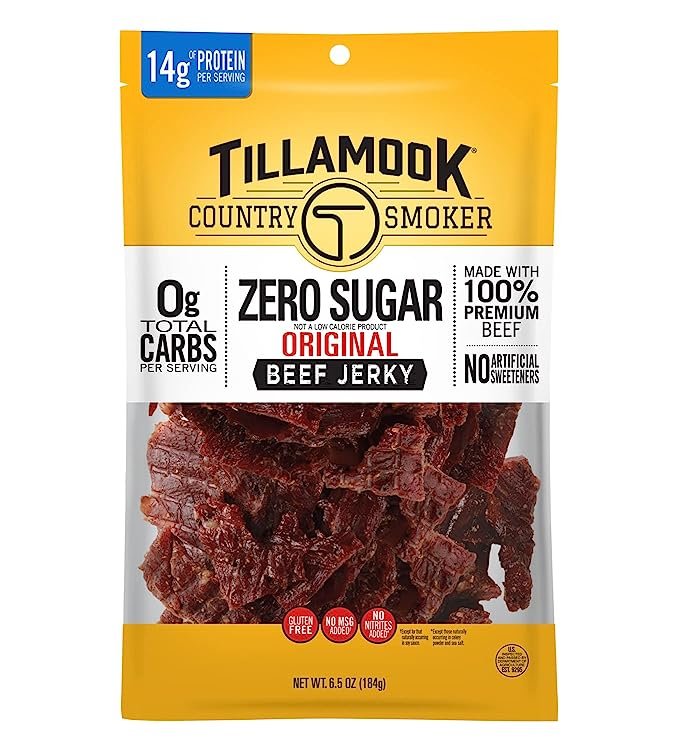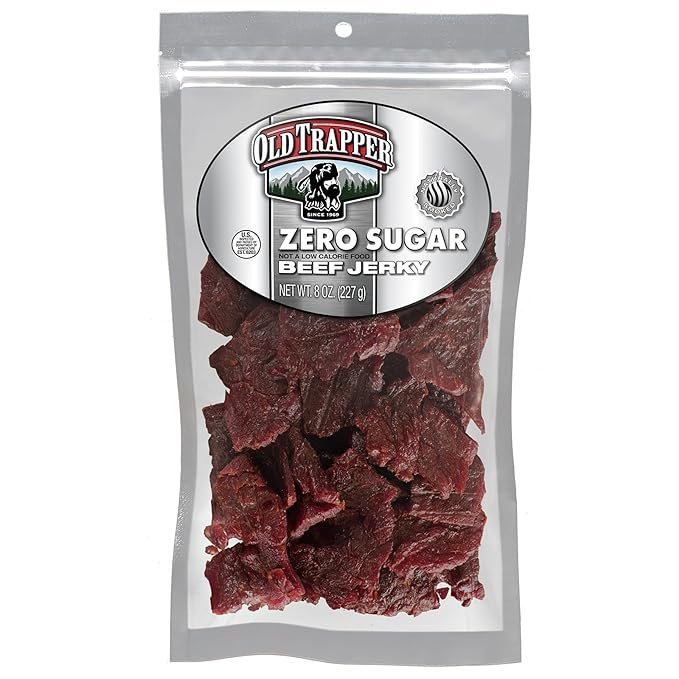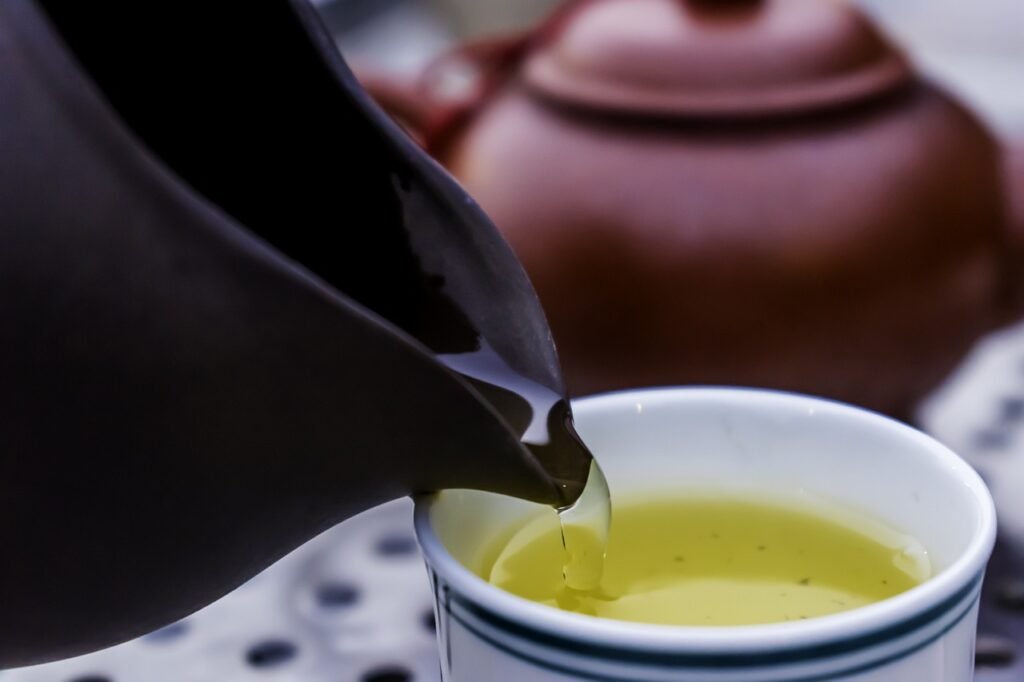
- Intro
- A Protein Powerhouse in the World of Snacks
- Navigating the Sodium Seas: A Look at Beef Jerky's Salt Content
- The Processing Puzzle: Understanding What Goes Into Beef Jerky
- A Comparison of Snack Choices: Where Does Beef Jerky Stand?
- Making Healthier Choices: Tips for Beef Jerky Lovers
- The Bottom Line: Is Beef Jerky Healthy?
Intro
In our ongoing quest for optimal nutrition and health, many of us often find ourselves pondering the snack aisle conundrum: Is beef jerky healthy?
As a protein-packed snack with a storied history, beef jerky has ridden the waves of dietary trends, emerging as a favorite among fitness enthusiasts and those looking for a satisfying nibble.
But before we reach for that savory, chewy snack, let’s dissect the nutritional blueprint of beef jerky and uncover the facts beneath its seasoned surface.
A Protein Powerhouse in the World of Snacks
In the realm of snacking options, beef jerky emerges as a notable contender for those in pursuit of a protein-rich choice.
The essence of its appeal lies in its robust protein composition, which plays a pivotal role in our bodily functions ranging from bolstering muscle repair to fortifying our immune system.
An ounce of this savory snack is capable of delivering a significant dose of protein, varying from 9 to 15 grams, a quantity that is contingent upon the brand and method of preparation utilized.
This attribute not only underscores its potential as an ideal post-exercise replenishment but also as a convenient source of sustenance that can invigorate one’s day without necessitating any form of refrigeration or elaborate preparation.
The distinct advantage of beef jerky is encapsulated in its ability to merge convenience with nutritional value, a rare feat in the snack domain.
Healthy Beef Jerky Recommendations:
Its protein density, pivotal for sustaining energy levels and aiding in the body’s recovery processes, positions it as an exemplary snack for those leading an active lifestyle or anyone seeking to incorporate more protein into their diet.
The portability and ease of storage further amplify its appeal, allowing it to serve as a reliable nutrient source whether one is navigating the challenges of daily life or embarking on outdoor adventures.
In essence, beef jerky stands as a testament to the possibility of combining nutritional efficacy with the practicality required by our modern existence.
Navigating the Sodium Seas: A Look at Beef Jerky’s Salt Content
Embarking on the sodium aspect of beef jerky requires a delicate balance, much like steering a ship through tempestuous seas.
Salt, a cornerstone in the preservation process of jerky, imbues it with its distinctive, savory flavor while concurrently acting as a preservative to prolong shelf life.
This duality of purpose, however, introduces a conundrum when it comes to health considerations.
With sodium levels often exceeding 400 milligrams per serving, this facet of beef jerky demands a closer examination for those conscious about their dietary intake.
The elevated sodium content inherent in most jerky varieties is a relic of its origins, a necessity in the pre-refrigeration era, yet in contemporary times, it poses a challenge for individuals with specific health concerns.
High sodium consumption is associated with an array of potential health risks, including but not limited to hypertension and cardiovascular complications.
These concerns necessitate a mindful approach to consumption, especially for those with predispositions to or existing conditions related to sodium sensitivity.
The intricacies of managing one’s sodium intake do not necessitate a complete avoidance of beef jerky but rather, encourage a more discerning selection process.
Awareness and moderation become the navigational tools for individuals looking to include beef jerky in their dietary repertoire without veering off course from their health objectives.
In this context, the exploration of beef jerky’s salt content serves not as a deterrent but as an invitation to engage with our food choices more thoughtfully, ensuring that even in our indulgences, we remain anchored to our health and well-being.
The Processing Puzzle: Understanding What Goes Into Beef Jerky
The journey from raw meat to the finished, shelf-stable product of beef jerky is a sophisticated one, involving more than mere dehydration.
This transformation process is both an art and a science, incorporating various additives to ensure taste, longevity, and safety.
Among these, preservatives such as sodium nitrite stand out, deployed to stave off bacteria and maintain the meat’s color and freshness over time.
Similarly, flavor enhancers like monosodium glutamate (MSG) are added to elevate the sensory experience of the jerky, making it more appealing to the palate.
However, it’s this very inclusion of additives that beckons a closer look into what we’re actually consuming.
While deemed safe in regulated doses, the presence of these chemicals in our snacks poses questions about the purity and wholesomeness of what might otherwise be considered a simple, protein-rich snack.
Additionally, the type of meat used, along with any added sugars to tweak the taste profile, can significantly affect the nutritional value of the final product.
Understanding the intricacies of beef jerky’s production process unveils a layered reality behind this seemingly straightforward snack.
It’s a reminder of the importance of scrutinizing the ingredients list, a practice that empowers consumers to make choices more aligned with their health and nutritional needs.
This awareness is crucial, especially in an era where the demand for convenience often overshadows the desire for nutritional integrity, pushing us to reconcile the convenience of processed foods with our pursuit of a health-conscious diet.
A Comparison of Snack Choices: Where Does Beef Jerky Stand?
In the grand tapestry of snack options, beef jerky occupies a unique niche.
It diverges significantly from the usual suspects of the snacking world, which often teeter towards either high-sugar content or minimal nutritional benefits.
This divergence is particularly pronounced when juxtaposed with snacks that are staples in a health-conscious diet, such as fruits, nuts, and vegetables.
These whole food options deliver a bounty of vitamins, minerals, and fibers, essential for comprehensive nutrition, without the burden of added sodium or artificial preservatives found in many processed snacks.
Yet, when the spotlight turns to comparing macronutrient profiles, beef jerky shines in its provision of high-quality protein.
This is a stark contrast to many carbohydrate-heavy snacks that might spike blood sugar levels and leave one grappling with the inevitable crash.
In this arena, beef jerky offers a steady source of energy, making it a formidable player for those looking to sustain their vigor without resorting to sugary fixes.
However, this comparison does not render other snacks obsolete but rather highlights the diversity required in a well-rounded diet.
Each snack category serves unique dietary roles and benefits. While fruits, nuts, and vegetables enrich our diet with essential micronutrients and fibers, beef jerky can be a pragmatic, protein-rich supplement to these nutrient powerhouses, provided it’s chosen with a discerning eye towards sodium and additive content.
This intricate dance of selection ensures that our snacking habits contribute positively to our overall dietary landscape, allowing for a harmonious blend of convenience, taste, and nutrition.
Making Healthier Choices: Tips for Beef Jerky Lovers
For aficionados of beef jerky unwilling to relinquish their favored snack amidst health concerns, there exists a pathway to navigate the intricacies of choice with precision.
A judicious approach begins with selecting brands that champion lower sodium levels, eschew the addition of superfluous sugars, and abstain from incorporating artificial preservatives into their products.
This strategy is not merely about subtraction but also about enhancing the nutritional profile of what we consume. By opting for jerky made from grass-fed beef, one can enrich their diet with a more favorable fatty acid composition, including an uptick in omega-3s, known for their anti-inflammatory properties.
The ethos of moderation cannot be overstated in this context. Integrating beef jerky into one’s diet should be viewed through the lens of balance, ensuring that its consumption is occasional rather than habitual. This approach permits the enjoyment of beef jerky’s savory satisfaction without relegating it to the centerpiece of one’s nutritional intake.
Engaging with beef jerky as a conscientious consumer involves more than a passive selection. It necessitates an active, informed engagement with product labels and nutritional information, fostering a relationship with our food that is rooted in awareness.
Through such measures, the culinary delight that beef jerky offers can be harmonized with a lifestyle that places a premium on health, allowing us to indulge in the flavors we cherish without compromising the nutritional principles we uphold.
The Bottom Line: Is Beef Jerky Healthy?
Navigating the terrain of snacking options, particularly with a health lens, presents a nuanced picture when it comes to beef jerky.
It stands as a beacon for those in pursuit of a high-protein snack, offering a commendable amount of protein that is beneficial for muscle repair, immune support, and satiety. The convenience factor of beef jerky is undeniable, providing a portable and long-lasting option that fits seamlessly into the hectic rhythm of modern life.
However, the voyage doesn’t end there. The waters become murkier as we delve into the sodium content and the presence of additives in many commercial beef jerky products.
These elements necessitate a mindful approach to consumption, emphasizing the importance of moderation and the selection of cleaner, less processed variants.
The essence of incorporating beef jerky into a health-conscious diet revolves around balance and informed decision-making.
Opting for versions with lower sodium, minimal added sugars, and without artificial preservatives can mitigate some of the potential drawbacks.
Moreover, diversifying one’s snack repertoire to include whole foods alongside beef jerky ensures a rich intake of essential nutrients and fibers, creating a well-rounded dietary landscape.
In summary, beef jerky occupies a space that can be aligned with healthy eating, provided it is approached with discernment and integrated thoughtfully into one’s diet.
It invites a narrative that doesn’t shy away from its complexities but embraces them as part of making empowered food choices that cater to both our cravings and our health.
Pin this post to read later







This website is AMAZING! It has helped so much for improvement and my health!
Thank you so much, Kloey! Wishing you all the best on your health and wellness journey! 🙂